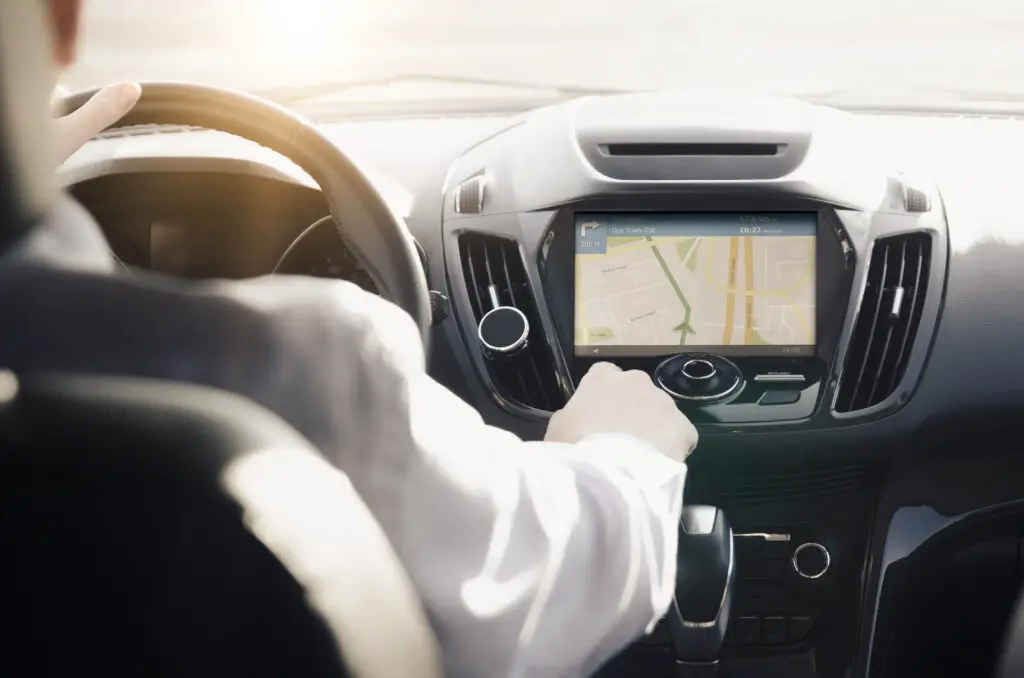We’re living in a time of smart everything, from the phones in our pockets to the appliances in our homes. Technology and sophisticated computer software are starting to affect every part of a person’s life. Driverless cars might be just a part of this puzzle, but they will completely change the way we see our four-wheeled road companions.
A driverless car is a vehicle that doesn’t need a human passenger in order to operate properly. With the use of many sophisticated sensory features and complex software development, a vehicle is able to navigate the road and avoid any obstacles the same way an experienced driver would. It might sound strange, but it’s slowly becoming a reality in the world of car manufacturing.
What Is a Self-Driving Car and How Does It Work?
When it’s time to buy a vehicle, chances are that you’ll be looking at an assortment of four-wheelers that are full of different features that make driving easier and safer. No matter if you’re thinking about getting a used vehicle or a brand new one, the technology that comes with it is one of the crucial aspects that ensures the convenience of your driving experience.
The evolution of cars is full of very important inventions, but they were mostly geared toward safety features. However, it’s been a long time since the first car ever came to fruition, and in the last couple of decades, the industry has been exploring other possibilities, such as electric engines and keyless ignition. A self-operating vehicle might seem like it came straight from the future, but the truth is that the future is right around the corner.
A Driverless Vehicle Will Completely Change the Driving Experience
There are a lot of terms used to describe this type of vehicle – a self-driving car, an autonomous or automated vehicle, a driverless car, a robotic car, and so on. You’ve probably stumbled upon at least one of them, and it left you wondering what they are exactly. Well, to describe it in the simplest way possible, a driverless car is a vehicle capable of traveling safely with little to no human involvement. That means they do not require a human driver to steer or pedal in order to get from one place to another.

How Is It Possible for a Vehicle to Operate on Its Own?
While it might seem like an invention straight out of a dystopian movie, the truth is that the technology is at a stage where it is possible to develop this kind of vehicle. Self-driving cars use different methods to perceive their surroundings. Including optical and thermographic cameras, radar and lidar, GPS, ultrasound and sonar, odometry, and inertial measurement units. With the help of complex algorithms and machine learning systems, the vehicle can potentially do everything that an experienced human driver does.
Control systems use all of this sensory information to come up with a three-dimensional model of their surroundings. Based on that model, the car identifies the navigation paths and methods for managing traffic regulations and obstacles. So, hypothetically speaking, this is not the best beginner car because, well, you just won’t need to drive most of the time. But, if driving stress is something you’re dealing with on a daily basis, a self-operating vehicle will be the solution to all of your problems.

There Are Different Levels of Autonomy When It Comes to Driverless Cars
While significant milestones have been achieved in the last few years, the truth is we’re still far away from having vehicles that can operate completely on their own. But the car industry is steadily evolving towards it, and soon enough, cleaning the steering wheel or trying to navigate while driving at night will be a thing of the past.
A Self-Driving Car vs. An Autonomous Vehicle – What’s the Difference?
While the terms self-driving and autonomous are often used interchangeably, they’re actually slightly different things. A self-driving vehicle can drive itself in some or even all circumstances, but a human driver must always be present and ready to intervene if needed. So, these types of vehicles have a lower level of automation, and they are slowly starting to hit the most famous routes in the US.
However, they are subjected to geofencing, which means they can operate within a limited area, usually as cars for city driving, where the top speeds reach approximately 30mph. On the other hand, a fully autonomous car will be able to go anywhere, and it won’t require a human passenger ready to take the wheel at any moment. Actually, they won’t even be required to have a steering wheel at all.

The Six Levels of Automated Vehicles
Similar to the development of electric cars, with hybrids hitting the market first, manufacturers have been introducing driverless features to regular manual vehicles for some time now. So, we already have partially autonomous vehicles on the road at the moment, geared with things like cruise control, self-parking technology, and braking assistance.
The Society of Automotive Engineers (SAE) acknowledges six levels of automated vehicles, starting from fully manual to fully autonomous, and these levels have been adopted by the US Department of Transportation (USDOT). Here’s an overview of each level:
| Level of Autonomy | Attributes | Description |
| 0 – No automation | Manual control | There might be features that help the driver, but they are required to perform all driving tasks |
| 1 – Driver assistance | Cruise control | The lowest level of automation, there is cruise control, but the driver monitors all other aspects |
| 2 – Partial driving automation | Advanced driver assistance | The vehicle can perform acceleration and steering, but the rest is up to the driver |
| 3 – Conditional driving automation | Environmental detection | The car is capable of performing a majority of the driving tasks, but human override is still necessary |
| 4 – High automation | Self-driving mode | The vehicle can drive itself in most circumstances, but there is still the option for a manual override |
| 5 – Full driving automation | Fully autonomous system | No human input is needed – all driving tasks are performed by the vehicle under all circumstances |
The six levels serve as a standard that helps to categorize and clarify the capabilities of automated vehicles. Making it easier for manufacturers, policymakers, and consumers to communicate about and understand the technology.
As we progress from Level 0 to Level 5, there is a gradual shift in responsibility from the human driver to the vehicle’s automated system. With increasing levels of sophistication and capability in handling driving tasks. This framework also plays a crucial role in building public trust and understanding as these advanced vehicles become more prevalent on our roads.

The Pros and Cons of Driverless Technology
So, we might still wait for some time until fully automated vehicles hit the streets, but discussions about the benefits and downsides of driverless technology have been held for a few years already. While there are many questions to be answered, there is no doubt that the presence of autonomous vehicles on the road will bring about a real revolution in urban transportation and other aspects of human life.
Driverless Cars Will Be Very Beneficial in the Long Run
When it comes to the environment, as well as driving responsibilities, self-driving cars can turn out to be very beneficial because they will completely eliminate some of these aspects that are unavoidable at the moment. Here are the biggest pros of autonomous vehicles:
- Reducing urban CO2 emissions – by the year 2050, there might be an 80% decrease in carbon emissions because most, if not all, self-driving vehicles will run on electric engines,
- Reducing traffic congestion – these vehicles can be programmed to provide enough space for other cars and allow traffic to run more smoothly and efficiently, as well as free up parking spaces and improve walkability,
- There is no room for human error – when the factor of human distraction is eliminated, the chances of accidents and even fatalities will be significantly reduced,
- No drunk driving accidents – while drunk driving is one of the biggest problems regarding human negligence on the road at the moment, a self-driving car will be the designated driver that gets you home safely in these circumstances,
- The elderly and disabled will be able to ride – people who are unable to drive on their own and therefore are dependable on others for transport will be able to move freely and independently.

This Revolution Will Come With Its Challenges
Sure, the benefits of introducing driverless vehicles to the roads might eliminate some of the worst aspects of owning a car, but there are also downsides to this whole ordeal. A completely new infrastructure will need to be built, professional truckers and cab drivers will lose their jobs, and becoming a better driver won’t really matter anymore. Besides these obvious drawbacks, there are also a lot of challenges when it comes to technology that is still undergoing research and development:
Human Error Is Eliminated, but Computers Have Glitches Too
It goes both ways – while the possibility of human error will be eliminated, computer glitches and errors in software can cause fatalities that a human driver could have easily prevented. Also, there is a possibility of multiple radio frequencies interfering with one another. There are a few famous instances where Tesla’s Model X autopilot software made a mistake that resulted in a crash, and this is a clear indicator that the driverless technology still has a long way to go.
Sensors Can Be Limited by Weather Conditions
Sensors such as LIDAR (Light Imaging Detection and Ranging) can be significantly limited in certain weather conditions, such as fog or heavy precipitation. Snow and debris can disguise lane dividers and other markings on the road, and therefore, the possibility of making a mistake significantly increases. This means that, as of now, automated vehicles won’t be suitable for every kind of weather condition you can experience on the road.
Traffic Regulations and Accident Liability Will Have to Be Reinterpreted
Autonomous vehicles have many difficulties to overcome, but they also need to earn people’s trust once they become available on the market. A survey done by the American Automobile Association (AAA) shows that approximately 71% of people would be afraid to use a self-driving vehicle. Only time can tell if the technology is safe for these vehicles to be put into commercial use and if people will be ready to embrace it.
The Top Car Manufacturers Are Exploring the Possibility of a Self-Operating Vehicle
Autonomous vehicles have many difficulties to overcome, but they also need to earn people’s trust once they become available on the market. A survey done by the American Automobile Association (AAA) shows that approximately 71% of people would be afraid to use a self-driving vehicle. Only time can tell if the technology is safe for these vehicles to be put into commercial use and if people will be ready to embrace it.
When Will Fully Autonomous Vehicles Be Available?
Currently, you can find vehicles that will automatically brake if in a collision path or those that have cruise control, but you are still required to stay attentive behind the wheel, whether driving in Los Angeles or in your off-road vehicle. On the other hand, fully autonomous cars are still in trial programs, and there will probably be years until anything higher than a Level 2 will hit the road.
What Are the Leading Car Brands That Are Developing Driverless Technologies?
While companies such as Waymo and Tesla have made claims in the last few years that self-operating vehicles will be available soon, it still hasn’t happened. No car manufacturer is quite there yet, but they are definitely getting closer. Here are some of the leading companies when it comes to driverless technology:
- Waymo – launched the first driverless taxi service in Phoenix, Arizona,
- Tesla – autopilot technology featured in Tesla vehicles is being constantly enhanced,
- Honda – the first manufacturer to market a legally approved Level 3 self-driving vehicle in 2021, the Honda Legend Hybrid EX,
- Audi – the famous A8 sedan got its driverless counterpart, and while it’s classified as a Level 2 vehicle in the US, in Europe, it is considered Level 3,
- Navya – a French company that is already selling Level 4 cabs and shuttles in the US.

Introducing Self-Operating Vehicles to the Streets Will Change a Lot of Things
There might be a lot of uncertainties when it comes to driverless technology, but one thing’s for sure – it will drastically change a lot of aspects of human life. From the automobile industry to urban planning, health, welfare, traffic, labor market, and insurance, things won’t be as we know them today. And we definitely won’t look at our trusted road companions in the same way again. Let’s see what the future holds.








